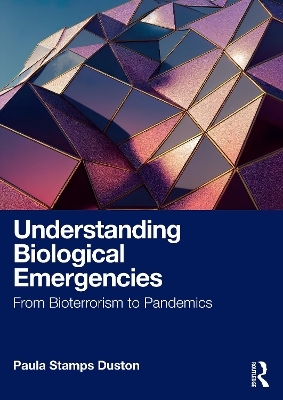
Understanding Biological Emergencies
Routledge (Verlag)
978-1-032-77410-7 (ISBN)
The work offers a new interdisciplinary approach to analyse the linkages between the three main sources of biological emergencies: intentional attacks, natural zoonotic transmission, and lab accidents. In doing so, the text describes the history of using nature to create a weapon, focusing on dispersal methods. The most important Select Agents for monitoring are described, with a special focus on anthrax and smallpox. The case studies presented include the use of the Biological Weapons Convention (BWC) in Iraq and the 2001 anthrax attack in the US. The policies that created the emergency preparedness system are analysed, and the current system is described in terms of their effectiveness in responding to the COVID-19 pandemic. The book concludes with some ideas and specific suggestions for moving from response to risk reduction and prevention.
This book will be of much interest to students of biosecurity studies, public health, public policy, political science and international relations, and to professionals working in the fields of public health, public safety, medicine, nursing, and first responders as well as military personnel.
The late Paula Stamps Duston was Professor Emeritus and Graduate Program Director, School of Public Health and Health Sciences, University of Massachusetts/Amherst, USA. She had 20 years’ experience of teaching and working with students, doctors, nurses, public health and public safety professionals to increase their understanding of bioterrorism and the emergency preparedness system. She was author of five single-authored books, including Analyzing Form, Function and Financing of the US Health Care System (2016). She passed away in 2024.
Part I: Setting The Context
Chapter 1 Should We Be Worried?
Chapter 2: Using Nature to Build A Weapon
Chapter 3 Science, Society and Safety
Part II: What Can We Learn From the Past?
Chapter 4: Scientists, Culture, and Ideology
Chapter 5: From the Lab to the Battlefield—and Beyond
Part III: Select Agents: Yesterday and Today
Chapter 6 Keeping Track of Risky Pathogens
Chapter 7 Most Common: Anthrax
Chapter 8 The Most Feared: Smallpox
Chapter 9 Threats From Other Select Agents
Part IV: Bioterrorism Comes to the U.S.
Chapter 10 Anthrax Spores in the US Postal System
Part V: What We have -- and What We Need
Chapter 11 New Policies Reflect Changing Risk Assessment
Chapter 12 From Policy to Implementation: The Biological Emergency Response System
Chapter 13 How Are We Doing? Dimensions of this Wicked Problem
Chapter 14 Solving the Puzzle: A Comprehensive Biosecurity System
| Erscheinungsdatum | 18.09.2024 |
|---|---|
| Zusatzinfo | 1 Tables, black and white; 2 Line drawings, black and white; 2 Illustrations, black and white |
| Verlagsort | London |
| Sprache | englisch |
| Maße | 174 x 246 mm |
| Gewicht | 621 g |
| Themenwelt | Sachbuch/Ratgeber ► Gesundheit / Leben / Psychologie |
| Studium ► Querschnittsbereiche ► Infektiologie / Immunologie | |
| Sozialwissenschaften ► Politik / Verwaltung ► Europäische / Internationale Politik | |
| ISBN-10 | 1-032-77410-X / 103277410X |
| ISBN-13 | 978-1-032-77410-7 / 9781032774107 |
| Zustand | Neuware |
| Haben Sie eine Frage zum Produkt? |
aus dem Bereich


